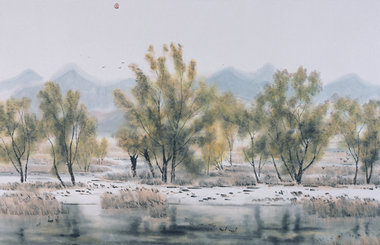In search of dream island
By Peng Yining In Dongshan, Fujian Province ( China Daily ) Updated: 2015-05-30 07:44:39
 |
|
Horse racing on the beach.[Photo provided to China Daily] |
Gu's tree-planting push in Dongshan
Although Dongshan is now famous for its leafy environment, back in the 1950s, most of the island was covered by desert.
According to the county's historical data, during one year in the '50s, the desert swallowed 11 villages. In a village called Shankou, some 900 villagers had to beg for food as their homes were destroyed by sand dunes.
Gu Wenchang, who became Dongshan's Party chief in 1950, was the first official who advocated the fight against the desert by planting trees.
He swore in front of the villagers that if he couldn't change the situation, he would rather be buried under the sand dunes.
In 1958, led by Gu, the people in Dongshan planted more than 200,000 coast oaks, a plant with a high tolerance of the salty land and windy weather.
Unfortunately, a sudden temperature drop killed most of the saplings. Two years later, Gu launched another tree-planting movement. Between 1960 and 1964, more than 400 hills in Dongshan were covered by trees.
The people in Dongshan also built a "green great wall", a 141-kilometer-long windbreaking forest, along the coast. Gu also led locals to build reservoirs and dig wells to ease the droughts.
To remember his contribution to Dongshan, the county built a memorial hall for Gu near his tomb in 2003, 22 years after he passed away.
He cared about poor people. On his way to inspect villages, he often rolled up his trousers and stepped into rice fields and worked with the farmers.
In addition to his contributions, Gu was also known for his integrity and frugality.
In April 2015, President Xi Jinping wrote an article to praise Gu's work and encouraged other officials to learn from him.
|
|
|
|
|
|
|
|

























 Raymond Zhou:
Raymond Zhou: Pauline D Loh:
Pauline D Loh: Hot Pot
Hot Pot Eco China
Eco China China Dream
China Dream China Face
China Face






